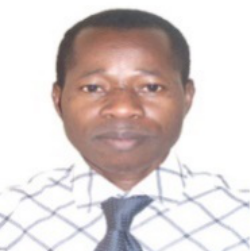International Journal of Intelligent Systems and Applications (IJISA)
IJISA Vol. 14, No. 5, 8 Oct. 2022
Cover page and Table of Contents: PDF (size: 686KB)
Artificial Neural Networks for Earth-Space Link Applications: A Prediction Approach and Inter-comparison of Rain-influenced Attenuation Models
Full Text (PDF, 686KB), PP.47-58
Views: 0 Downloads: 0
Author(s)
Index Terms
Artificial Neural Networks, intercomparison of models, synthetic storm techniques, tropical regions, Earth-Space Links
Abstract
The impact of rain-influenced attenuation (RIA) has a more pronounced effect as frequency increases, especially in the tropical zones with heavier rainfall than the temperate zones. The International Telecommunication Union (ITU) has recommended a universal model which may not fit well in this tropical region due to the temperate data used to develop the model. It is therefore necessary to adopt locally measured data to develop a suitable model for each region, as also recommended by ITU recommendation 618-13. The experimental site for this study is at the Department of Physics, Federal University of Technology, Akure, Nigeria (7.299° N, 5.147° E) in the tropical rainforest region of Nigeria. In the present work, the backpropagation neural network (BPNN) of the artificial neural network (ANN) is trained based on time-series rain rates data collected between 2015 and 2019 to predict time-series RIA. Based on four inputs (rain rate, rain heights, elevation angle, and polarization angle), the generated data was subjected to training, validation, and testing. The ANN was further trained using the Levenberg-Marquardt algorithm to fit the inputs and the targets to create a dynamic model for RIA forecasting. Further validation was tested using actual data of rain attenuation from a Ku-band beacon at the site. Subsequently, the RIA model created by the ANN was compared to those generated using the synthetic storm technique, ITU, and the actual rain attenuation obtained from a beacon measurement. The highest rain rate observed was about 225.8 mm/hr with a corresponding rain attenuation of about 61 dB as estimated by the SST model and about 68 dB by the ITU model, while the predicted attenuation by the ANN is 55 dB. This implies that an extra power of 6 dB and 13 dB is added by the SST model and ITU model, respectively, for the downlink signal, to compensate for the rain attenuation link. The results also reveal that during 0.01 percent of an average year that signal may be attenuated, a relatively tiny margin of error between anticipated rain attenuation using ANN and the SST model is exceeded. In general, the new ANN-generated RIA model had the lowest root mean square error, average relative error, and standard deviation at the selected time percentages, according to the model validation. Hence, the new ANN model can predict more effective RIA in the region when compared with the global ITU-R model.
Cite This Paper
Joseph S. Ojo, Chinedu K. Ijomah, Shittu B. Akinpelu, "Artificial Neural Networks for Earth-Space Link Applications: A Prediction Approach and Inter-comparison of Rain-influenced Attenuation Models", International Journal of Intelligent Systems and Applications(IJISA), Vol.14, No.5, pp.47-58, 2022. DOI:10.5815/ijisa.2022.05.05
Reference
[1]P. A Owolawi,, "Raindrop size distribution model for the prediction of rain attenuation in Durban,". PIERS Online, Vol. 7, No. 6, pp. 516-523, 2011
[2]F. Qamar, U. Maraj, S. Ahmed, MHD Nour Hindia, Rosilah Hassan and Quang Ngoc Nguyen, "Issues, Challenges, and Research Trends in Spectrum Management: A Comprehensive Overview and New Vision for Designing 6G Networks". MDPI Electronics, 9(9), p. 1416, 2020.
[3]J.S Ojo, E.O Olurotimi and O.O Obiyemi, "Assessment of Total Attenuation and Adaptive Scheme for Quality of Service Enhancement in Tropical Weather for Satellite Networks and 5G Applications in Nigeria", Journal of Microwaves, Optoelectronics and Electromagnetic Applications (JMOe), 20(2), AoP 228–247, 2021
[4]Satish S. Bhojannawar, Shrinivas R. Managalwede, "Distributed and Dynamic Channel Assignment Schemes for Wireless Mesh Network", International Journal of Computer Network and Information Security(IJCNIS), Vol.14, No.2, pp.39-53, 2022. DOI:10.5815/ijcnis.2022.02.04
[5]Kok Yeow You, "Propagation Channel Modeling for Low-Altitude Platform Non-Terrestrial Networks from 275 GHz to 3 THz", International Journal of Wireless and Microwave Technologies(IJWMT), Vol.12, No.3, pp. 1-17, 2022. DOI:10.5815/ijwmt.2022.03.01
[6]K. C Robert, Propagation Handbook for Wireless Communication System Design. CRC Press LLC.2000N.W, Chapter two, 2003.
[7]J.S Ojo, D.B Akoma, O. Adetan, and S.E Falodun, "Analysis of Rain-Induced Attenuation at Ku-V Band Using Gamma Drop Size Distribution Model over a Tropical Region", Wireless Personal Communications, 124, pp. 29–48, 2022.
[8]J. Roy, R. Archaya, and S.K Sivaraman, "Attenuation prediction for fade mitigation using neural network with in situ learning algorithm", Advances in Space Research, Vol. 49, Issue 2, 15 January 2012, Pp. 336-350.
[9]J.S Ojo, A.T Adediji., J.S Mandeep and M. Ismail, "Variation of slant path Ka/V-band rain attenuation over seven tropical locations in Nigeria using synthetic storm techniques” Theoretical and Applied Climatology, Vol. 124, pp. 487-496, 2016..
[10]J.S Ojo, M.O Ajewole and S.K Sarkar, "Rain rate and rain attenuation prediction for satellite communication in Ku and Ka bands over Nigeria" Progress in Electromagnetics Research B, Vol. 5, pp. 207–223, 2008.
[11]Rashid G. Alakbarov, "Challenges of Mobile Devices' Resources and in Communication Channels and their Solutions", International Journal of Computer Network and Information Security(IJCNIS), Vol.13, No.1, pp.39-46, 2021. DOI:10.5815/ijcnis.2021.01.04
[12]Rajesh Chakraborty, Uttam Kumar Mandal, Rabindra Nath Barman, " A Comparative Study of ANN and GEP Model to Predict the Pressure Drop in the Water Transportation System", International Journal of Information Engineering and Electronic Business(IJIEEB), Vol.12, No.5, pp. 47-57, 2020. DOI:10.5815/ijieeb.2020.05.05
[13]Nayak D. R., Mahapatra A. and. Mishra P, “A Survey on Rainfall Prediction using Artificial Neural Network,” Int. Journal of Computer Applications, Vol. 72, No. 16, June 2013.
[14]McCulloch W and Walter P A logical calculus of ideas immanent in nervous activity. Bulletin of Mathematical Biophysics, pp. 115-133, 1943.
[15]N. Hung N. Q, Babel M. S., Weesakul S., and Tripathi N. K., “An artificial neural network model for rainfall forecasting in Bangkok, Thailand,” Hydrol. Earth Syst. Sci., 13, pp. 1413-1425,. 2009.
[16]Oluseun.D.Oyeleke, Sadiq Thomas, Olabode Idowu-Bismark, Petrus Nzerem, Idris Muhammad. “Absorption, Diffraction and Free Space Path Losses Modeling for the Terahertz Band", International Journal of Engineering and Manufacturing(IJEM), Vol.10, No.1, pp.54-65, 2020. DOI:10.5815/ijem.2020.01.05
[17]M.N Ahuna, T. J. Afullo and A.A Akintunde, "Rainfall Rate Prediction Based on Artificial Neural Networks for Rain Fade Mitigation over Earth – Satellite Link", IEEE Africon 2017 Proceeding, Cape Town, 18-20 September 2017, pp. 579-584.
[18]H.D Purnomo, K.D Hartomo, and S.Y.J Prasetyo, "Artificial Neural Network for Monthly Rainfall Rate Prediction?. IOP Conf. Series: Materials Science and Engineering, 180 (1-9), (2017). doi: 10.1088/1757-899X/180/1/012057.
[19]K. C Sri Kavya, Kotamraju, S. K., Rani, G.L, "Prediction of rain attenuation using artificial neural networks". International Journal of Pure and Applied Mathematics, Vol. 117, No. 18, pp. 171-175, 2017..
[20]M. N Ahuna, T.J Afullo and A.A Alonge, "Rain Attenuation Prediction Using Artificial Neural Network for Dynamic Rain Fade Mitigation", South African Institute of Electrical Engineers, Vol. 110 (1). pp. 11-18, 2019.
[21]I.D Olatunde, K.O Babatunde, and.D O Afolabi, "Rain Attenuation Prediction in Nigeria Using Artificial Neural Network (ANN)" , International Journal of Electrical and Electronic Science, 6(1): pp. 1-7, 2019.
[22]N,Kolisetti Janani, V, Sritha, G., Sri Lekha, S. C, Siddharth S, "Rainfall Rate Prediction Using an Artificial Neural Network". Juni Khyat (UGC Care Group I Listed Journal) Vol-10 Issue-5 No. 7, pg 69-76 (2020)
[23]R. Rojas, “The Backpropagation Algorithm” in Neural Networks: A systematic Introduction, Berlin, Germany: Springer-Verlag, 1996, pp. 151-182.
[24]J.S Ojo, A.K Adenugba, O.M Durodola, and J.T Ibitokun, "Assessment of rainfall rate and fade event duration for earth-space satellite links design in Nigeria". Indian Journal of Radio and Space Physics 49, pp. 139-143, 2020.
[25]E. Matricciani, "Prediction of fade durations due to rain in Satellite Communication System,” Radio Science, Vol. 32, No. 3, pp. 935-941, 1997.
[26]ITU-R Recommendation P.618-13. Propagation and prediction methods required for design of earth-space telecommunication systems. ITU-R, Geneva, Switzerland, 2017.
[27]ITU-R Recommendation P.838-3.. Specific attenuation model for rain for use in prediction methods. International Telecommunication Union, Geneva, Switzerland, 2005
[28]D. Maggiori (1981) Computed Transmission through Rain in the 1-400 GHz Frequency Range for Spherical and Elliptical Drops and Any Polarization. Alta Frequenza (Italy), 50, 262-273.
[29]ITU-R Recommendation P.311-17, Acquisition, presentation and analysis of data in studies of tropospheric propagation”. ITU. International Telecommunications Union, Geneva, 2019. 8pp


